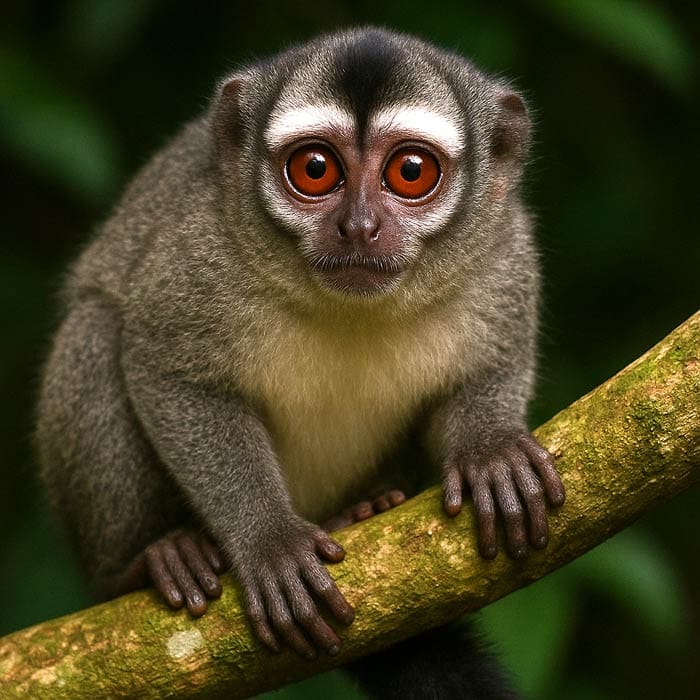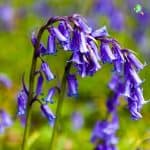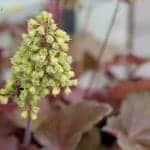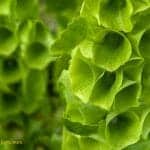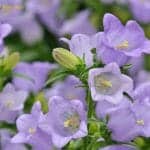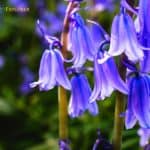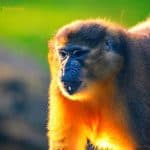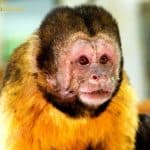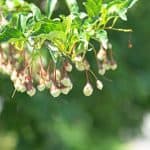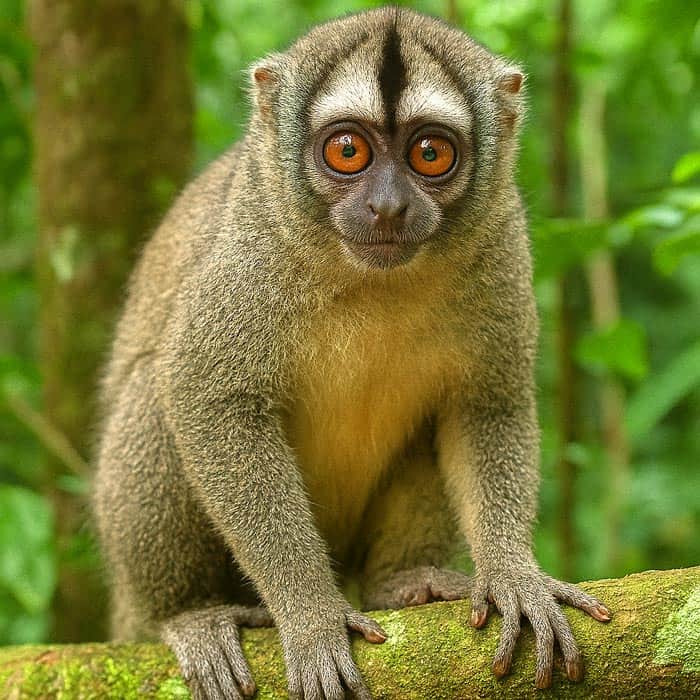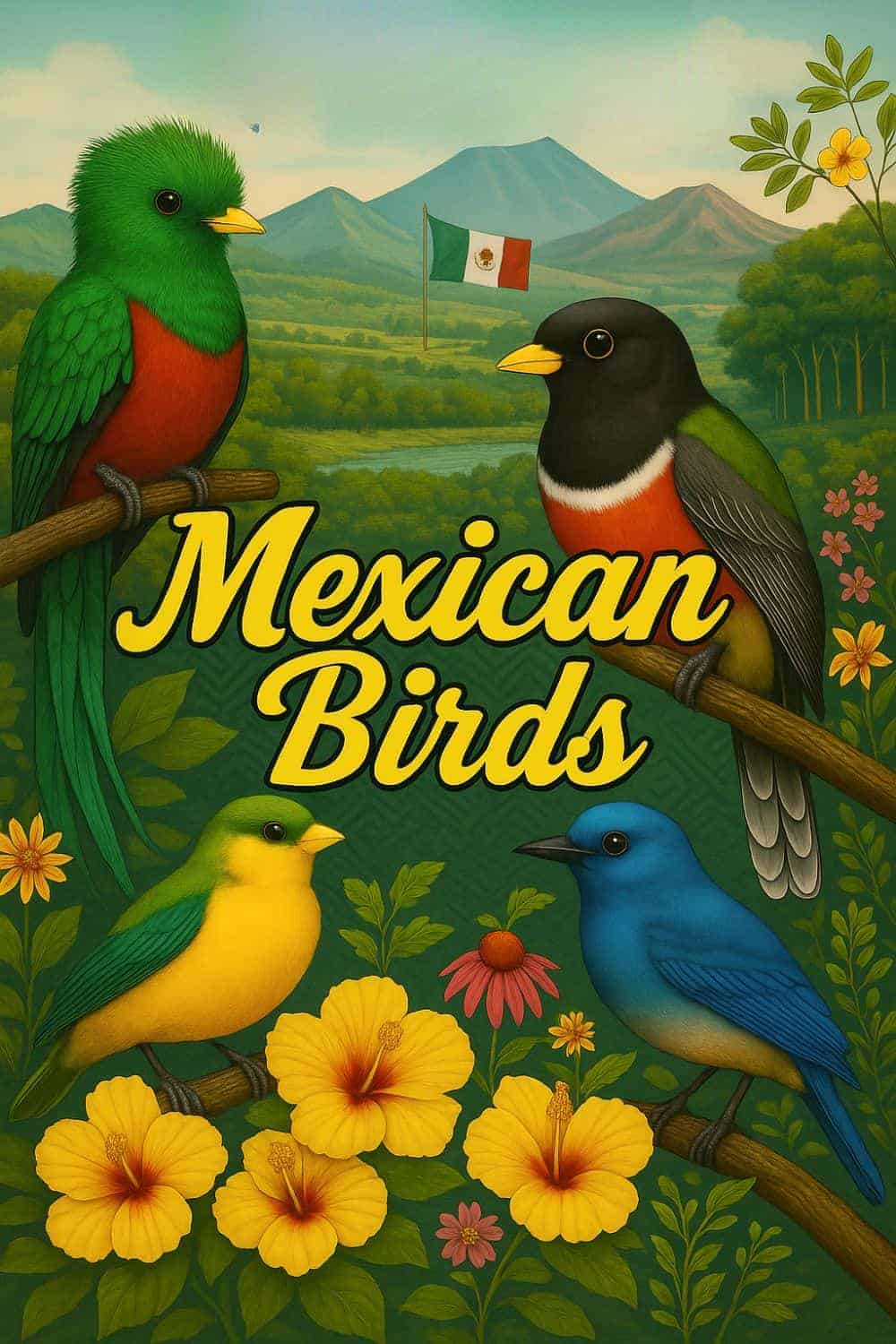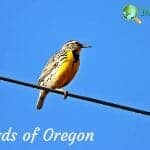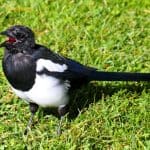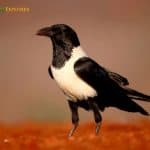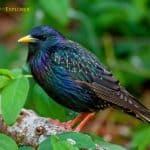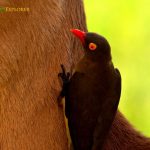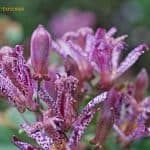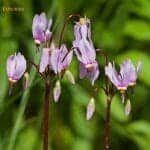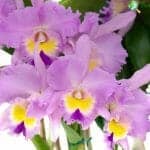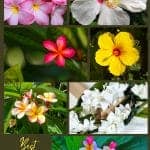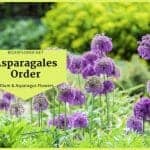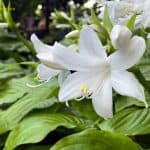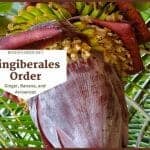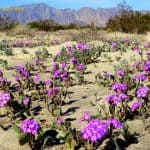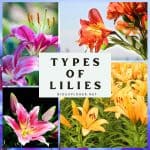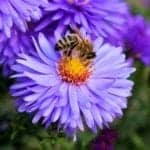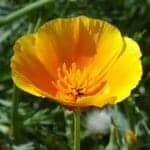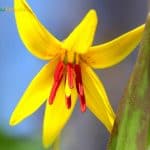Bell - search results
If you're not happy with the results, please do another search
Gray-bellied Night Monkey
The gray-bellied night monkey (Aotus lemurinus) is a rare nocturnal primate found in the cloud forests of Colombia and Ecuador. Recognizable by its red eyes, gray underbelly, and woolly coat, it thrives in dense canopies where it feeds on fruits, insects, and nectar. Its nocturnal habits reduce competition and help it evade predators like owls and snakes. As both seed disperser and prey, it plays a key ecological role—yet habitat loss continues to threaten its survival.
Bluebell Flower
Explore the enchanting Bluebell flower (Hyacinthoides non-scripta), its vibrant violet-blue blooms, ecological significance, different types of bluebells and fun facts in this comprehensive guide.
Coral bells
Coral bells (Heuchera Americana) are the world's perennial coleus. First, these plants came in soft colors with small, insignificant flowers. Now they are available in a wide range of colors, with some varieties explicitly cultivated for their flower masses. The small, greenish-white flowers in airy, open panicles are borne on slender, thread-like stems extending well above the mound of leaves, typically 18-24 inches high in late spring and early summer.
Bells of Ireland
Despite their namesake, these majestic bell-shaped greens are native to the Turkey, Syria, and Caucasus regions. They have a scent that many people cannot really describe. The thing about the Bells of Ireland is that they can get so tall.
Canterbury Bells
With their large, bell-shaped flowers, Canterbury Bells are a pleasant addition to cottage gardens and natural plantations. Canterbury bells (Campanula medium) originate from southern Europe but have been present in many gardens since the 16th century.
Bell-Shaped Flowers
The bell-shaped flowers are trendy because they are known for their beauty, colors, and variations. Featuring green, blue, purple, white, pink, and many colors, these bell-resembling flowers are used for many purposes such as decoration, using it in weddings, making wreaths, and lovely gifts.
Royal Bluebell
Wahlenbergia gloriosa is a perennial herb from the Family Campanulaceae. The leaves of the Royal Bluebell are small, opposite, and dark green. Leaves have oblong wavy edges that become broad towards the apex.
Red-bellied Titi
The Red-bellied titi (Plecturocebus moloch) is a marmoset species of New World monkey native to Brazil. It lives in thickets and forests. Like other titis, red-bellied titi is territorial and emits vocal cries to mark its territory and scare other animals.
Chestnut-bellied Titi
The chestnut-bellied titi monkey is a New World primate species native to Brazil. The Chestnut-bellied Titi monkeys live in family groups consisting of father, mother, and baby monkeys ranging in size from three to seven with other affiliates.
Red-bellied Monkey
The red-bellied monkey (Cercopithecus erythrogaster), also called the red-bellied guenon or white-throated guenon is a diurnal primate living in the trees of tropical rainforests or tropical areas in Benin and Nigeria. The red-bellied monkey was once considered extinct due to constant hunting for fur on its unique red belly and white front legs.
Golden-Bellied Mangabey
The golden-bellied mangabey (Cercocebus chrysogaster) is a gregarious Old-World monkey found in humid, swampy forests south of the Congo River. Golden-bellied mangabeys are a migratory and social species, moving in groups of 8 to 30 members.
Golden-Bellied Capuchin
The golden-bellied capuchin (Sapajus xanthosternos), also called the buff-headed or yellow-breasted capuchin is a New World monkey species. They spend much time grooming one another for socialization, with the alpha species receiving the most attention.
Campbell’s Mona Monkey
Campbell's Mona monkey, also called the Campbell's monkey or Campbell's guenon is a primate species in the Cercopithecidae family. The species was named after Henry Dundas Campbell in 1838.
White-bellied Spider Monkey
The white-bellied spider monkey (Ateles belzebuth), also called the long-haired or white-fronted spider monkey, is an endangered species of spider monkey, a species of New-World monkey. These arboreal monkeys spend most of their time in the canopy. They rarely go down. When they do, they drink water, eat dirt, traverse a treeless area, or run away from an aggressive opponent.
Japanese Snowbell
The Japanese Snowbell is a deciduous tree that can grow to 15-25 feet. The leaves of Styrax japonica are alternate and simple. They are broad-elliptic to elliptic-oblong. These leaves are medium to dark green with a measurement of 2.5-9 cm. long and 1.3 -4 cm wide.
Types of Eagles
Explore all 68 types of eagles in this comprehensive guide. Learn about each species' unique traits, habitats, and behaviors across the globe.
Gray-handed Night Monkey
The gray-handed night monkey (Aotus griseimembra) is a small, nocturnal primate native to Colombia, Venezuela, and Panama. Known for its large owl-like eyes and gray limbs, this tree-dwelling monkey thrives in rainforest canopies and plays a vital role as a seed disperser. Monogamous and family-oriented, it relies on both parents—especially the father—for infant care. Though adaptable, habitat loss, hunting, and the pet trade threaten its survival, earning it a Vulnerable status on the IUCN Red List. Conservation efforts are crucial to preserve this unique night-dweller and its forest ecosystem.
Top 15 Mexican Birds (Spectacular Species You Must Know)
Discover the top 15 Mexican birds, from vibrant quetzals to rare doves. Learn where to find Mexico’s most colorful and unique bird species across forests, coasts, and mountains.
What Do Wolves Eat?
Wolves are classified under a broad taxonomic family referred to as Canidae. Explore what do wolves eat, their diet by types, when do they eat, how much they eat and what eats them.
What Do Catfish Eat?
Catfish are unique looking fish notable for their barbells which give the impression of a cat's whiskers. Explore what do catfish eat & their diet by types.
Top 15 BEST Birds of Missouri
Here are the top 15 birds of Missouri and their fascinating fun facts along with where can one spot each of them in the State of Missouri.
Top 10 Birds of Oregon
Oregon is notable for its diverse habitats, including alpine meadows, rainforests, pine forests and more. Find top 10 birds of Oregon including its state bird (Western Meadowlark).
Preuss’s Monkey
The Preuss's monkey (Allochrocebus preussi) also called the Preuss's guenon is a diurnal primate that inhabits terrestrial montane forests (up to 2,500 meters) in eastern Nigeria, western Cameroon, and Bioko in Equatorial Guinea.
Black-billed Magpie
The Black-billed Magpie is a striking, medium-sized bird with a long iridescent tail, black head and back, and bold white patches on its wings and belly. Found in western North America, it thrives in open habitats like meadows, grasslands, and near human settlements. Magpies are highly social and intelligent, often seen in noisy flocks and known for their complex social displays. They build large, domed nests and mate for life. Notably, magpies sometimes gather around deceased companions in a behavior likened to a “funeral.” Black-billed Magpies can recognize themselves in mirrors, a rare trait among birds.
Pied Crow
The Pied Crow is a striking black-and-white corvid native to sub-Saharan Africa and nearby islands. Easily recognized by its glossy black head, wings, and tail contrasted with a broad white chest and belly, it is slightly larger than the Carrion Crow and has a robust, slightly hooked bill. Highly adaptable, Pied Crows thrive in open savannas, grasslands, farmlands, and urban areas, often seen in pairs or small groups but sometimes gathering in large flocks. Exceptionally intelligent, they use tools, cache food, and mimic sounds. Their omnivorous diet includes insects, small animals, fruit, carrion, and human scraps.
European Starling
The European Starling is a medium-sized, black songbird with short, triangular wings, a short tail, and striking iridescent plumage speckled with white, especially in winter. During breeding season, adults display a yellow bill and a purple-green sheen. Native to Europe, Asia, and North Africa, starlings were introduced to North America in the 1890s and now number over 200 million. Highly social, they form enormous flocks and perform mesmerizing aerial displays called murmurations. Starlings are accomplished mimics, able to imitate other birds and even human sounds. They are aggressive cavity nesters, often outcompeting native species for nesting sites.
Eastern White Pine
Explore the world of the Eastern White Pine, a majestic tree with a rich history and diverse uses. Learn about its characteristics, its role in the ecosystem, and how to care for it. Discover why the Eastern White Pine is more than just a tree; it's a symbol of resilience and a testament to nature's bounty.
15 Outstanding Birds of Ohio
At present, Ohio has 5 distinct geographical regions from Lake & Till Plains to Appalachian Plateau and Bluegrass Region. Find 15 Best Birds of Ohio here.
Spider Monkeys
Spider monkeys comprise 7 New World primate species adept at brachiating through Central and South American rainforest canopies, endangered due to habitat destruction. Their spindly prehensile tails, flexible shoulder joints, hook-like fingers and fusion-fission social groups represent unique adaptations for foraging canopy fruits.
Top 26 Washington Birds
Explore the overview of 26 must-see top Washington Birds species including facts on goldfinches, owls, hawks, finches and more. This comprehensive guide will help with identification of birds of Washington.
What Is Biological Magnification?
Understand biological magnification - how toxins accumulate exponentially up food chains to dangerous levels in top predators. Unpack biomagnification impacts, sources, and solutions.
What Animals Live In Rainforests?
Discover the incredible biodiversity of the tropical rainforest. Dive deep into the habitats of rainforest animals, from the elusive jaguar to pink-toe tarantulas.
Red-billed Oxpecker
The Red-billed Oxpecker is a medium-sized, olive-brown bird easily recognized by its vivid red bill and yellow eye-ring. Native to the savannas of sub-Saharan Africa, it forms a remarkable mutualistic relationship with large mammals like buffalo, giraffe, and rhino, feeding on ticks and other parasites from their skin. Specialized claws and stiff tail feathers help it cling to moving hosts. Highly social, oxpeckers communicate with sharp, hissing calls and may even alert hosts to predators. Their diet also includes earwax and blood from wounds, sparking debate over whether they are always helpful. Nests are built in tree cavities lined with animal hair.
Crowned Eagle
The Crowned Eagle, also known as the African Crowned Eagle, is a powerful raptor native to sub-Saharan Africa, favoring dense forests and woodlands. Recognizable by its striking dark crest and intense yellow eyes, this eagle boasts a wingspan of 5–6 feet and is considered Africa’s most powerful eagle pound for pound. Its massive talons and strong legs allow it to hunt large prey, primarily monkeys, small antelope, and hyraxes, though it occasionally takes birds and reptiles. Crowned Eagles build enormous nests high in emergent trees, sometimes reusing them for over a decade. Their courtship includes dramatic aerial displays and prey offerings.
Top 25 Rare Birds of All Time
Explore the 25 rare birds in the world, including the Kakapo and Philippine Eagle, with stunning visuals, unique facts, and their incredible rare bird habitats.
What Do Toads Eat?
Toads are notable for their dry, bumpy skin with glands located behind their eyes. Explore what do toads eat, toads diet by types, what eats toads & more.
Top 18 BEST Tundra Animal Adaptations
The coldest areas on Earth, such as regions close to the North Pole and the South Pole, have unique features. Here are the top 18 tundra animal adaptations.
All You Need To Know About Leopard Geckos
Among reptiles, the leopard gecko is perhaps one of the most popular. This is the first-ever species of lizard to be domesticated. Learn all about leopard gecko here including appearance, diet, habitat, reproduction and ecological importance.
Toad Lily
Tricyrtis affinis is a perennial Japanese plant of the Liliaceae. This species is endemic to Japan and can grow to a height of 30-60 cm. The flowers of Tricyrtis affinis are white with purple spots. The flowers have six free tepals in two whorls. Tricyrtis is a symbol of fertility.
Shooting Star
Dodecatheon media, a shooting star, is a very popular native North American wildflower, commonly found in open woods, prairies, meadows, rocky wooded slopes, and bluff ledges. The shooting star is a plant species in the Primulaceae (primrose) family. There are more than 17 species in the Dodecatheon genus.
Cattleya
Cattleya orchids display a fantastic look that several plant lovers could not resist. Cattleya belongs to a genus of Cattleya spp. in the family Orchidaceae. There are currently 35 natural hybrids and 46 recognized species of the genus Cattleya. These orchids are native to the tropics like South and Central America. The blooms can reach a diameter of 8 inches, with colors ranging from white to blue, yellow, red, purple, and orange.
Dendrobium
Dendrobium orchids (Dendrobium spp.) are among the most popular orchid species among hobbyist growers and orchid lovers. Grown primarily as an ornamental houseplant or for their flowers, these striking beauties produce delicate and showy blooms in various colors, including pink, purple, green, and creamy white.
Top 26 Best Hawaiian Flowers
Explore the top 26 unique Hawaiian flowers exclusive to Hawaii's archipelago. Dive into the world of these beautiful species, their interesting facts, and their significance in Hawaii's ecosystem.
Order Asparagales / Allium and Asparagus Flowers
Asparagales is a monophyletic order that contains many species, including important crop plants such as Allium and Asparagus. This order has 29 families and closer to 50k flowering plants. Popular flower species in this order are day-lily, irises and lilioid monocots.
25 Must-See Colorful Orchids
Discover 25 stunning colorful orchids, from vibrant blues to fiery reds. Explore their unique features, habitats, and the vital role of color in orchid ecology.
August Lily
Discover the August Lily (Hosta plantaginea): a perennial with fragrant white flowers, medicinal properties, and ecological benefits, perfect for shaded gardens and borders.
Azalea
Discover the vibrant world of Azaleas in our comprehensive guide. Learn about different types, ideal planting conditions, care tips, and how to handle common pests and diseases. Perfect your green thumb with our step-by-step guide to planting and propagating these stunning shrubs.
36 Most Colorful Birds In The World!
The most colorful birds give you a clue of the diversity in the world of birds (Aves). Here are the world's beautiful top 36 birds and their features.
Order Zingiberales / Ginger, Orchidantha & Banana Plants
Zingiberales' order comprises several species of great economic importance, like the banana and the ginger. Members have almost restricted distribution to tropical regions. Zingiberales species have ptyxis, large flowers, attractive colors, and inferior ovaries. Banana, Bird-of-paradise, Orchidantha, ginger, costus, and Canna lily are examples of Zingiberales order.
Desert Sand Verbena
The Desert Sand Verbena is a native species of the southwestern United States and Northern Mexico, growing in the sandy areas of the desert. The flowers are trumpet-shaped. The flowers are fragrant with 5 lobes.
43 Blue Flowers Unveiled: Why These Beauties Have Captured Everyone’s Attention?
Discover the hidden secrets of 43 types of blue flowers in our captivating blog post. Explore the rarity of natural blue pigments in flowers and symbolism and meanings of blue flowers.
Order Liliales / Lily Flowers
Liliales is the lily order of monocotyledonous flowering plants. Members of this order involve herbaceous plants, shrubs, and lianas. Liliales flowers are distributed worldwide but common in the subtropical and temperate regions. Lanzhou Lily, Chilean Bellflower, Katakuri/Trout Lily, and Wood's bunchflower are some of the Liliales example species.
Types of Lilies
Discover the stunning beauty of different types of lilies. From oriental hybrids to unique lily species, learn about the diverse world of lily varieties.
Exploring the Top 50+ Most Exquisite Purple Flowers in the World
Are you looking for cute purple flowers to plant in your garden, or want to learn about them from a botany perspective? Here are the 50+ top pretty purple flowers and their names.
Blooming Texas: 25 Gorgeous Native Flowers Revealed!
Texas is a large state with its own floristic region, having more than 5,000 species of native flowering plants. Because of its diverse landforms, Texas offers many famous blooms for visitors and residents. Explore the top 25 Texas flowers and their characteristics.
Order Alismatales / Aquatic Flowering Plants
Alismatales are an order of aquatic flowering plants, including some well-known species such as the water arum (Calla palustris), Nymphoides peltata, and Japanese water shield (Brasenia schreberi). They are sometimes known as the watermints.
Order Asterales / Daisy and Sunflower
Asterales is a dicotyledonous order of flowering plants that holds ten percent of the angiosperm species diversity. Common sunflower, common daisy, Toropapa, Hydrangea, Bogbean, Water snowflake, and Cobalt mound are some of the beautiful flowers in Asterales.
Calibrachoa
Calibrachoa is sometimes seen adorning cascading planters or hanging baskets and other containers, a hardy, and delicate flower. It's not the most popular choice in terms of formal arrangements and bouquets. Still, when presented as a potted plant, Calibrachoa is a flower with deep symbolism for its recipient.
California Poppy
The California Poppy (Eschscholtzia californica) became California's official state flower on March 2, 1903. The four-petal desert flowers, borne on stems 8 to 12 inches (20 to 30 cm) long, are typically cream, orange, or pale yellow. Still, cultivars are white and in a variety of pinks and reds.
Adder’s Tongue
Erythronium americanum is a perennial herb that belongs to the family Liliaceae. This species is a native range of Eastern North America. The common name of Adder's Tongue is given because of the shape of the flowering shoot.


